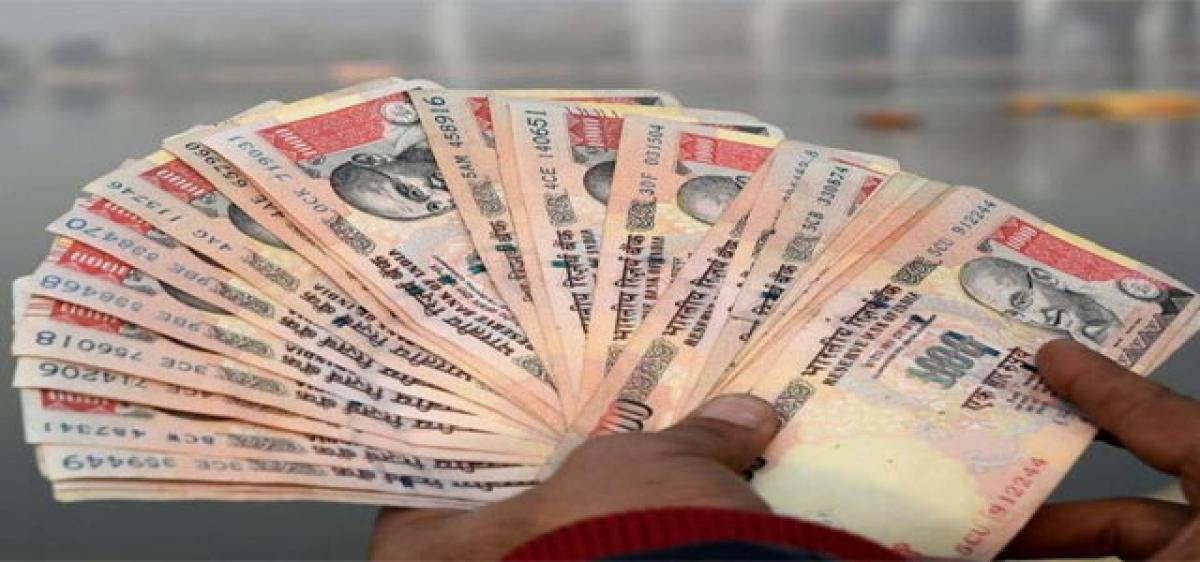Live
- 39 candidates file papers on Day 1
- ED arrests AAP MLA Amanatullah Khan in Waqf Board appointment scam
- LS polls: Union Minister Bhagwanth Khuba, Dingaleshwara seer, Priyanka Jarkiholi file nominations in K'taka
- Amid show of strength, Congress’ Praniti Shinde files nomination from Solapur
- Tamil Nadu Police gives clean report to Isha Foundation in missing volunteers case
- Home Minister Amit Shah to address public meeting in Goa on April 24
- Gurgaon Open: M Dharma fires 67 for two-shot lead on penultimate day
- Sharad Pawar made many attempts to finish Shiv Sena, claims Maha minister
- Former England opener Raman Subba Row dies aged 92
- IPL 2024: Impact player rule is affecting the progress of half all-rounders, says Zaheer Khan
Just In

Notwithstanding the positive feedback despite common man’\'s travails, the demonetisation debate continues.
Notwithstanding the positive feedback despite common man’'s travails, the demonetisation debate continues. The basic question thrown up by the politically contentious debate is that whether the government's decision to withdraw currency notes of higher denomination entails a structural measure to weed out black money. This question forcefully comes up as the ruling political establishment seeks to romanticise it.
The massive black money is parked in myriad ways. A small portion is stored in the form of cash. When there are various means to possess and transfer black money like the gold trade, under-valuing assets etc., the need to store it in the form of currency notes is very limited. Calling the demonetisation move as a deadly blow on black money is simply exaggerating intended at reaping political mileage.
The hype created to make people believe that the latest demonetisation is the first of its kind is farcical. Earlier such moves in 1946 and 1978 failed to stem the scourge. Fifty days are given to deposit unaccounted currency notes. It's obviously aimed at preventing inconvenience to the legitimate holders of such currency. Each individual is also given an opportunity to deposit Rs 2.5 lakh without any legal monitoring.
This would ensure many illegitimate holders to exchange their unaccounted money. Reports are coming in the media how such illegal wealth holders are finding innovative means to overcome the new regulations. As a result, some middlemen who help in transactions may be benefitted with a share of the black money. But, it would not bring the unaccounted wealth to account.
New currency notes with even higher denomination have been introduced which would automatically facilitate future accumulation of black income. There were no accompanying measures to regulate the sectors of economy like real estate, gold and jewellery trade that are more vulnerable to black money. There are no measures to identify and confiscate benami transactions and properties.
When so many parking avenues exist, it is difficult to control black money holders from escaping the clutches of law. Besides, the new move would not in any way help in curbing the continuous process of illegitimate money crossing the Indian shores to be stashed away in tax havens abroad.
Any income or wealth possessed disproportionate to the known sources of income is not just corruption but a clear sign of unaccounted wealth acquired through legitimate or illegitimate ways. Display of such illegal wealth is too visible to go unnoticed. Yet, there is no action to bring them to book.
The cronyism in the economy, arbitrary allocation of precious natural resources at a pittance, etc. go unabated. A sizable part of illegal wealth acquired through distorted invoicing of trade and deported through hawala actually comes back into the economy in the form of participatory notes to become foreign white investment. No such aspects were addressed.
Black money is not just stock of illegal income and wealth. It is uncontrolled flow of such money. The latest measure would not in any way hit at its circulation. It would not even significantly target the hoard. Yet, it's a welcome measure whatever may be the limited impact of it in curbing the menace. But, looking at its benefits from a magnifying lens of high resolution is erroneous.

© 2024 Hyderabad Media House Limited/The Hans India. All rights reserved. Powered by hocalwire.com







